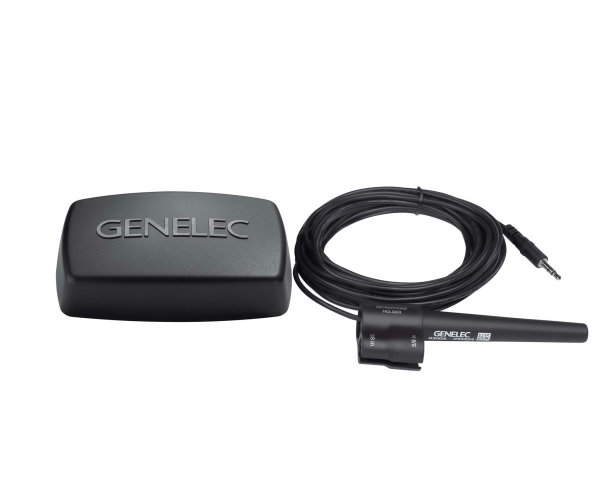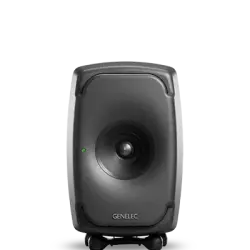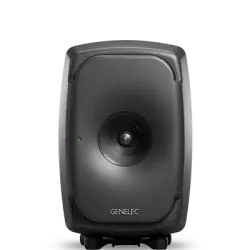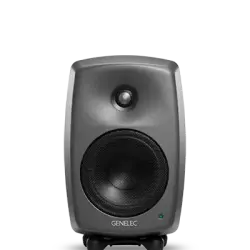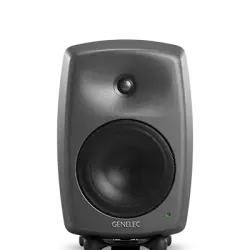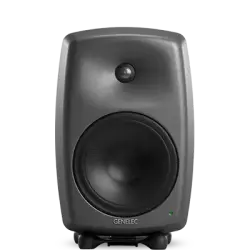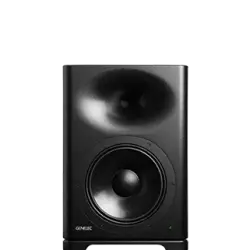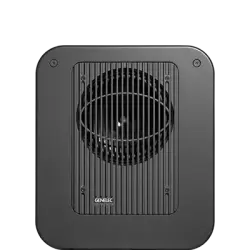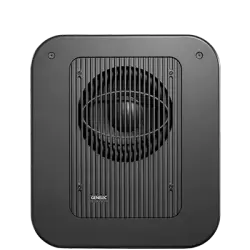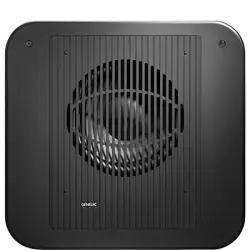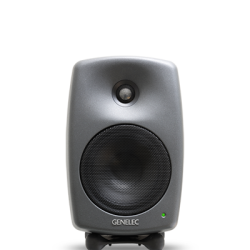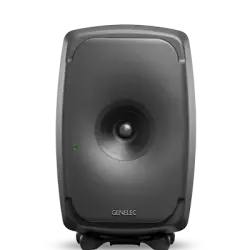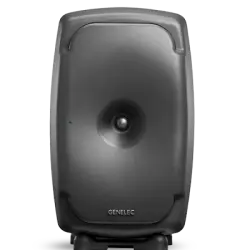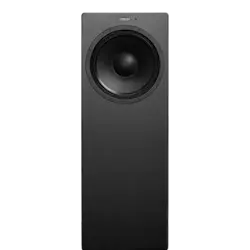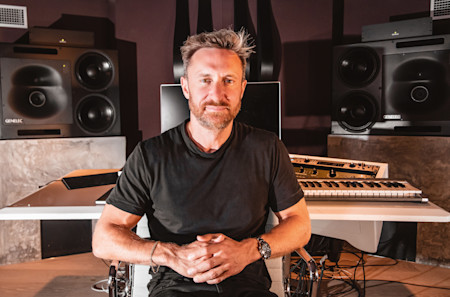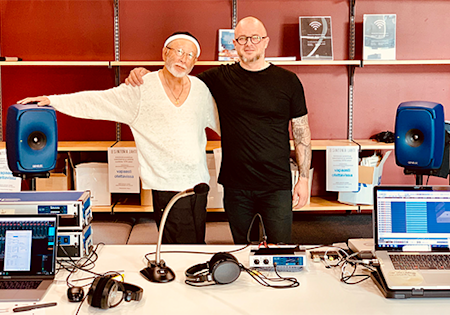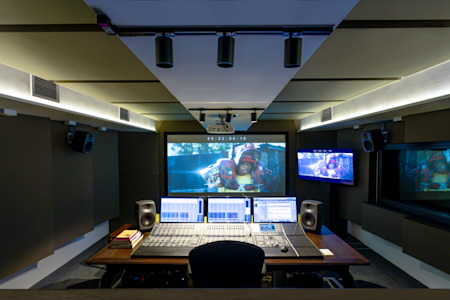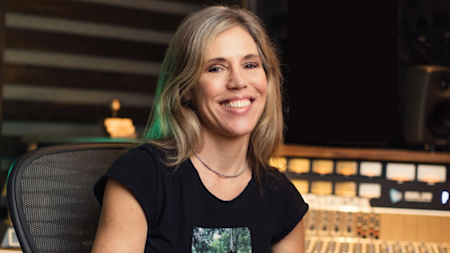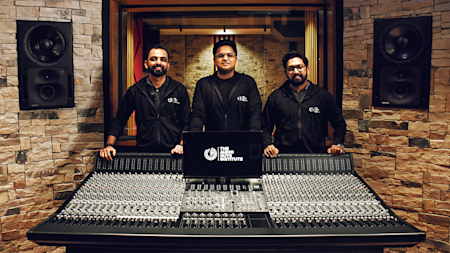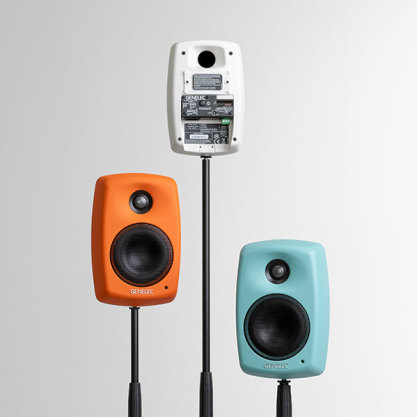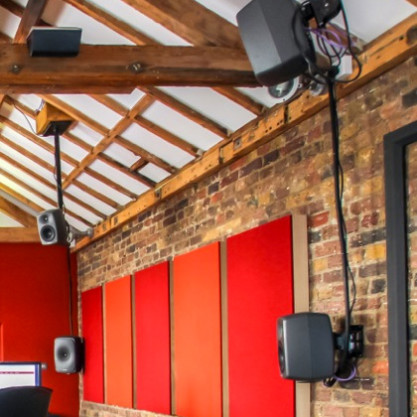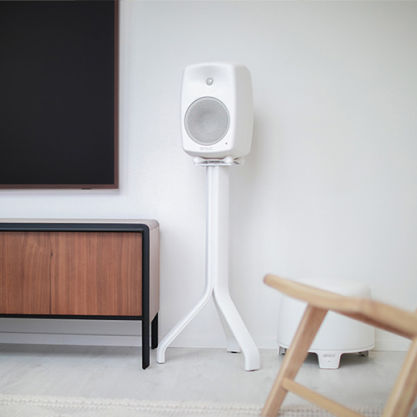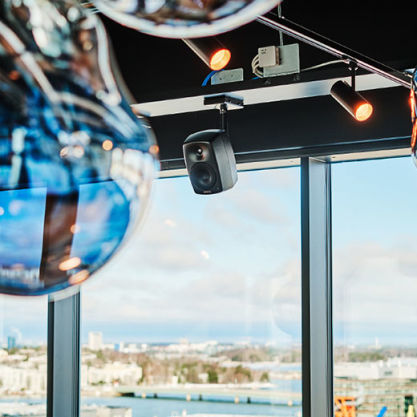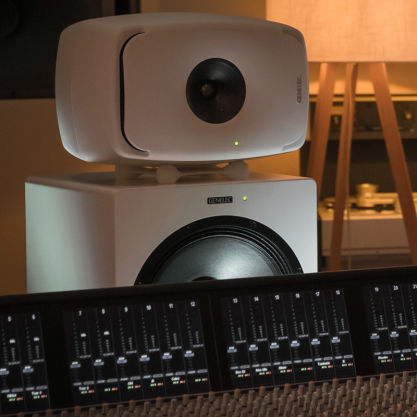Since its introduction, the GLM software application has helped audio professionals on both Mac and PC to configure, calibrate and control their Genelec monitor systems, delivering fully optimised performance for their acoustic environment. GLM 3 now offers Cloud services, Reference Level listening features and several other important refinements – making it the most powerful version of GLM yet!
GLM Software
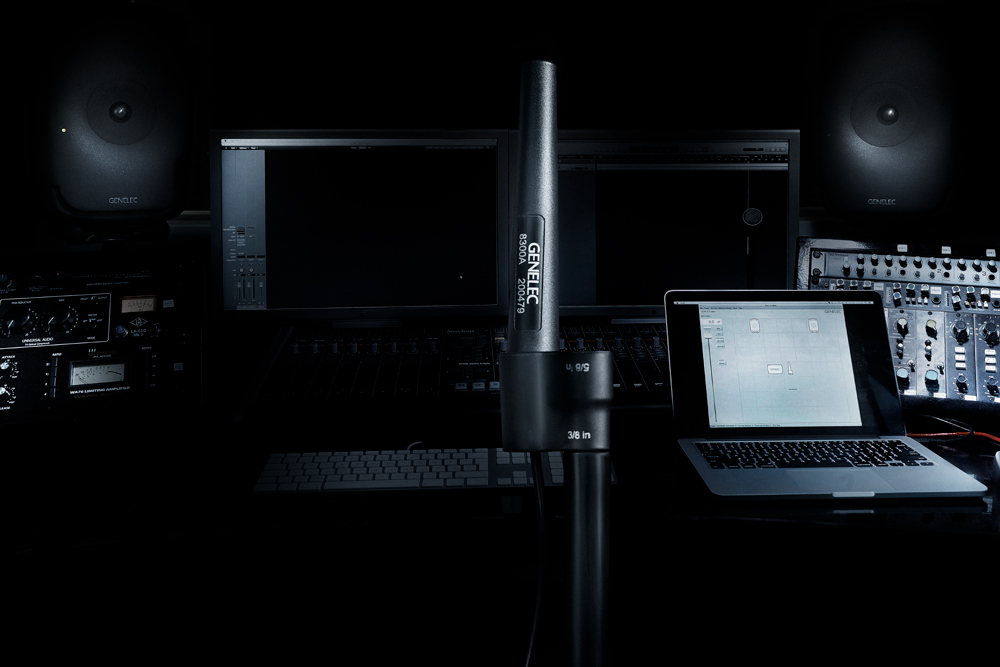
If you’ve ever been frustrated that your mixes don’t translate well to other systems, it’s because your monitors and your room are interacting to produce a frequency response that can be far from the neutral and smooth response that you need to create a great mix.
GLM 3 software tightly integrates with the advanced internal DSP circuitry which a growing family of Genelec SAM monitors and subwoofers is equipped with, from the tiny 8320 to the massive 1236A. GLM 3’s reference microphone kit allows your acoustic environment to be analysed, after which GLM 3’s AutoCal feature optimises each monitor for level, distance delay, subwoofer crossover phase and room response equalisation, with the option for you to further fine tune the system. By minimising the room’s influence on the sound, GLM 3 helps Genelec monitors deliver an unrivalled reference, with excellent translation between rooms.

Whether you’re a new Genelec SAM user - or you’re an existing user who wants to upgrade to the latest version - then GLM 3 is a free download, available via the links below.
Please note that to enable GLM software to integrate with your SAM monitors, you’ll also need the Genelec network adaptor kit (8300-601) – which includes the GLM network adaptor, 8300A calibration microphone and microphone holder, 1.8 m USB cable and Quick Connection Guide. The network adaptor connects to your Mac or PC via the supplied USB cable, and to your SAM monitors via an 5 metre Ethernet cable (which is supplied separately with each SAM monitor).
With GLM 3 you can…
- Manage and control up to 77 SAM monitors and subwoofers.
- Easily and swiftly create systems to suit all types of stereo, multiple stereo, multichannel or 3D immersive audio formats.
- Optimise, combine and switch between Genelec monitors to make the most of the environment in which you are working.
- Use AutoCal to achieve neutral sound reproduction. Accurate and stable sound stage imaging is delivered thanks to adjustments of levels, distance delays, subwoofer crossover phase and room response compensation equalisation.
- Use the personalisation feature to customise your preferred response - without sacrificing predictability.
- Submit your GLM files to our Cloud Helpdesk facility to access online expert support and advice.
- Calibrate listening levels to loudness standards, such as ATSC A/85 and EBU R128, without the need for a high quality external monitor controller or other measurement tools.
- Take advantage of GLM Cloud services anywhere and anytime – providing a secure back-up and instant access to the very latest software updates and standards.
- Manage levels with the GLM master fader calibrated in relative dB or absolute SPL scale, or with external wired or wireless level controllers available as accessories.
- Store calibration settings for different listening positions; then instantly recall them as required during production.
- Create and recall customised response curves and analogue or digital inputs.
- Enjoy the benefits of repeatable and consistent performance, enabling accurate monitoring in any production environment.
References
GLM 4 Loudspeaker Manager Software I Features and Benefits
What is GLM (Genelec Loudspeaker Manager)? | One Minute Masterclass Season 2 Part 9
How GLM™ (Genelec Loudspeaker Manager) Software Works
GLM 4 Loudspeaker Manager Software I Features and Benefits
Our GLM 4 software gives you the power to connect, calibrate and control any Genelec Smart Active Monitor or Subwoofer, and minimise the unwanted acoustic influences of your room.
What is GLM (Genelec Loudspeaker Manager)? | One Minute Masterclass Season 2 Part 9
GLM is a software for connecting, calibrating and controlling your Genelec SAM monitoring systems.
How GLM™ (Genelec Loudspeaker Manager) Software Works
Frustrated that your material doesn’t sound so great on other systems? In this video we show you how to calibrate the Genelec SAM™ monitors with the Genelec Loudspeaker Manager (GLM™) Software to get the most out of your room and ensuring that your mixes translate perfectly.
"These studio monitors pack a serious amount of technology into a very compact package. Can all this tech combat the issues associated with powerful rear ported designs and can the GLM™ 3 system cope with a truly dreadful set of listening circumstances?"
{"fi-FI":"The Production Expert's comprehensive [review](https://www.pro-tools-expert.com/production-expert-1/2018/7/12/genelec-8331-sam-8341-sam-the-ones-studio-monitors-re-writing-the-rule-book "Review of Production Expert - 8331, 8341 and GLM 3") "Genelec 8331 SAM & 8341 SAM "The Ones" Studio Monitors & GLM™ 3 - Do They Re-Write The Rule Book?" does not only list the pros and cons, but also describes the user experience of the products.\n\nThe review was published in August 2018.","ru-RU":"The Production Expert's comprehensive [review](https://www.pro-tools-expert.com/production-expert-1/2018/7/12/genelec-8331-sam-8341-sam-the-ones-studio-monitors-re-writing-the-rule-book "Review of Production Expert - 8331, 8341 and GLM 3") "Genelec 8331 SAM & 8341 SAM "The Ones" Studio Monitors & GLM™ 3 - Do They Re-Write The Rule Book?" does not only list the pros and cons, but also describes the user experience of the products.\n\nThe review was published in August 2018.","de-DE":"The Production Expert's comprehensive [review](https://www.pro-tools-expert.com/production-expert-1/2018/7/12/genelec-8331-sam-8341-sam-the-ones-studio-monitors-re-writing-the-rule-book "Review of Production Expert - 8331, 8341 and GLM 3") "Genelec 8331 SAM & 8341 SAM "The Ones" Studio Monitors & GLM™ 3 - Do They Re-Write The Rule Book?" does not only list the pros and cons, but also describes the user experience of the products.\n\nThe review was published in August 2018.","en-US":"The Production Expert's comprehensive [review](https://www.pro-tools-expert.com/production-expert-1/2018/7/12/genelec-8331-sam-8341-sam-the-ones-studio-monitors-re-writing-the-rule-book "Review of Production Expert - 8331, 8341 and GLM 3") "Genelec 8331 SAM & 8341 SAM "The Ones" Studio Monitors & GLM™ 3 - Do They Re-Write The Rule Book?" does not only list the pros and cons, but also describes the user experience of the products.\n\nThe review was published in August 2018.","sv-SE":"The Production Expert's comprehensive [review](https://www.pro-tools-expert.com/production-expert-1/2018/7/12/genelec-8331-sam-8341-sam-the-ones-studio-monitors-re-writing-the-rule-book "Review of Production Expert - 8331, 8341 and GLM 3") "Genelec 8331 SAM & 8341 SAM "The Ones" Studio Monitors & GLM™ 3 - Do They Re-Write The Rule Book?" does not only list the pros and cons, but also describes the user experience of the products.\n\nThe review was published in August 2018.","es-ES":"The Production Expert's comprehensive [review](https://www.pro-tools-expert.com/production-expert-1/2018/7/12/genelec-8331-sam-8341-sam-the-ones-studio-monitors-re-writing-the-rule-book "Review of Production Expert - 8331, 8341 and GLM 3") "Genelec 8331 SAM & 8341 SAM "The Ones" Studio Monitors & GLM™ 3 - Do They Re-Write The Rule Book?" does not only list the pros and cons, but also describes the user experience of the products.\n\nThe review was published in August 2018."}
Proaudio.de website's online review of Genelec 8331A studio monitor and GLM kit. The review is written in German and it was published in August 2018.
{"fi-FI":"Proaudio.de website's online review of Genelec 8331A studio monitor and GLM kit. The [review](https://www.proaudio.de/de/tests/20420-genelec-8331a-mit-loudspeaker-manager-user-kit.html "Genelec Aktiv-Lautsprecher 8331A mit Loudspeaker Manager User Kit") is written in German by Erol Ergyn, and it was published on 7th August, 2018.","ru-RU":"Proaudio.de website's online review of Genelec 8331A studio monitor and GLM kit. The [review](https://www.proaudio.de/de/tests/20420-genelec-8331a-mit-loudspeaker-manager-user-kit.html "Genelec Aktiv-Lautsprecher 8331A mit Loudspeaker Manager User Kit") is written in German by Erol Ergyn, and it was published on 7th August, 2018.","de-DE":"Proaudio.de website's online review of Genelec 8331A studio monitor and GLM kit. The [review](https://www.proaudio.de/de/tests/20420-genelec-8331a-mit-loudspeaker-manager-user-kit.html "Genelec Aktiv-Lautsprecher 8331A mit Loudspeaker Manager User Kit") is written in German by Erol Ergyn, and it was published on 7th August, 2018.","en-US":"Proaudio.de website's online review of Genelec 8331A studio monitor and GLM kit. The [review](https://www.proaudio.de/de/tests/20420-genelec-8331a-mit-loudspeaker-manager-user-kit.html "Genelec Aktiv-Lautsprecher 8331A mit Loudspeaker Manager User Kit") is written in German by Erol Ergyn, and it was published on 7th August, 2018.","sv-SE":"Proaudio.de website's online review of Genelec 8331A studio monitor and GLM kit. The [review](https://www.proaudio.de/de/tests/20420-genelec-8331a-mit-loudspeaker-manager-user-kit.html "Genelec Aktiv-Lautsprecher 8331A mit Loudspeaker Manager User Kit") is written in German by Erol Ergyn, and it was published on 7th August, 2018.","es-ES":"Proaudio.de website's online review of Genelec 8331A studio monitor and GLM kit. The [review](https://www.proaudio.de/de/tests/20420-genelec-8331a-mit-loudspeaker-manager-user-kit.html "Genelec Aktiv-Lautsprecher 8331A mit Loudspeaker Manager User Kit") is written in German by Erol Ergyn, and it was published on 7th August, 2018."}
Documentation
Documents
Operating Manual GLM 3 System SAM™ Series Full Line Catalogue Immersive Solutions Brochure Brochure Immersive Solutions (DE)Reviews
Production Expert: Genelec 8331 SAM & 8341 SAM "The Ones" Studio Monitors & GLM™ 3 - Do They Re-Write The Rule Book?, August 2018 (UK) proaudio.de: Genelec Aktiv-Lautsprecher 8331A mit Loudspeaker Manager User Kit, August 2018 (DE)FAQ
The Genelec Loudspeaker Manager (GLM™) Package provides all necessary components to establish connectivity to SAM™ monitors. Complete network system setup and control of up to 30 monitors and subwoofer is possible via a standard CAT5 or CAT6 cabling.
The GLM™ includes simple to use step-by-step setup wizards to ensure a pain-free and thorough installation, access to extensive Acoustical Settings in each monitor, and System Setup files for saving and recalling of all settings.
As an essential part of the GLM software, GLM™ AutoCal is a fully automated acoustical calibration tool for a single room multi-monitor system which combines decades of acoustic research along with our proprietary DSP and network control. The AutoCal system produces monitor-generated test signals recorded by a calibration microphone to determine correct acoustical alignments for every monitor and subwoofer on the GLM control network.
The differences are in the steepness of the crossover filters and the slightly tighter on-axis response. When using the GLM™ control network and AutoCal, the monitor can be integrated into the room with greater precision and the differences may be significant.
Software updates and upgrades will be clearly announced on the Genelec web site.
"These studio monitors pack a serious amount of technology into a very compact package. Can all this tech combat the issues associated with powerful rear ported designs and can the GLM™ 3 system cope with a truly dreadful set of listening circumstances?"
The Production Expert's comprehensive review "Genelec 8331 SAM & 8341 SAM "The Ones" Studio Monitors & GLM™ 3 - Do They Re-Write The Rule Book?" does not only list the pros and cons, but also describes the user experience of the products.
The review was published in August 2018.
Proaudio.de website's online review of Genelec 8331A studio monitor and GLM kit. The review is written in German and it was published in August 2018.
Proaudio.de website's online review of Genelec 8331A studio monitor and GLM kit. The review is written in German by Erol Ergyn, and it was published on 7th August, 2018.





